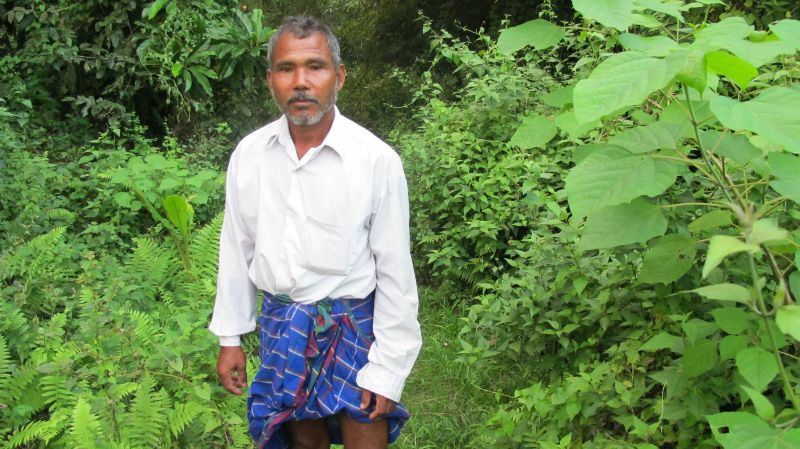The Forest Man of India

The Brahmaputra River is one the world’s longest, stretching 4,696 km (2,918 miles) through China, Tibet, India, and Bangladesh. And toward its eastern end is Majuli, an island surrounded by the Brahmaputra and some of its tributaries. Majuli has been shrinking over the years; per Wikipedia, “it had an area of 880 square kilometers (340 sq mi) at the beginning of the 20th century, but having lost significantly to erosion it covers 352 square kilometers (136 sq mi) as at 2014.”
And a man named Jadav Payeng, above, is a major reason why it isn’t even smaller.
Payeng is one of about 150,000 people who live in the area, a place he’s called home his whole life. In 1979, at the age of 16, heavy rains hit the area. For the river snakes, this was a death sentence; as the Times of India reported, “floods washed a large number of snakes ashore on the sandbar.” The next day, Payeng came across dozens of snakes on the shore, dead. This was a turning point in Payeng’s life, as he explained to the paper three decades later:
The snakes died in the heat, without any tree cover. I sat down and wept over their lifeless forms. It was carnage . I alerted the forest department and asked them if they could grow trees there. They said nothing would grow there. Instead, they asked me to try growing bamboo. It was painful, but I did it. There was nobody to help me. Nobody was interested.
Most people would have given up. But Payeng decided to fix it himself: he began planting trees. And he never stopped.
In 1980, a local government agency began “a five-year tree plantation scheme to fight rapid soil erosion,” according to Mongabay News, and Payeng took a job on that effort as a laborer. The project was a failure and was abandoned three years into the five-year window. Payeng, though, kept at it. As Mongabay further notes, “he left his education and home in Kokilamukh to live on the sandbar, willingly accepting a tough life of isolation. [And that’s an understatement; Payeng’s new home lacked electricity or plumbing.] Alone, he tended to plants while planting more along the way until the sandbar eventually turned into a bamboo thicket.” And then, he gave proper trees a try — and that worked, too. So kept on planting. Over more than forty years, Payeng has planted tens if not hundreds of thousands of trees. And today, on Majuli, you’ll find his forest: a 550 hectare (about 1,400 acre) expanse, nearly twice as large as New York City’s Central Park (which comes in at 341 ha).
Today, the forest, often called the Molai Forest, a reference to a nickname commonly used by Payeng, isn’t just a bunch of trees. Tigers, rhinos, and all sorts of other animals have also taken root along with the trees, and the forest has become its own ecosystem. In fact, while Payeng is the only person involved in his project, he doesn’t take all the credit. “It’s not as if I did it alone,” he told NPR. “You plant one or two trees, and they have to seed. And once they seed,” he adds reverentially, “the wind knows how to plant them, the birds here know how to sow them, cows know, elephants know, even the Brahmaputra river knows. The entire ecosystem knows.”
Payeng’s efforts have earned him another nickname: the Forest Man of India. A 2013 documentary, titled Forest Man, further tells his story.
Bonus fact: Bamboo is the fastest growing plant out there. According to Guinness World Records, some species of the plant “have been found to grow at up to 91 cm (35 in) per day,” or about 3.8 cm/1.5 in per hour.
From the Archives: Treemail: Ever want to email a tree? You can!
